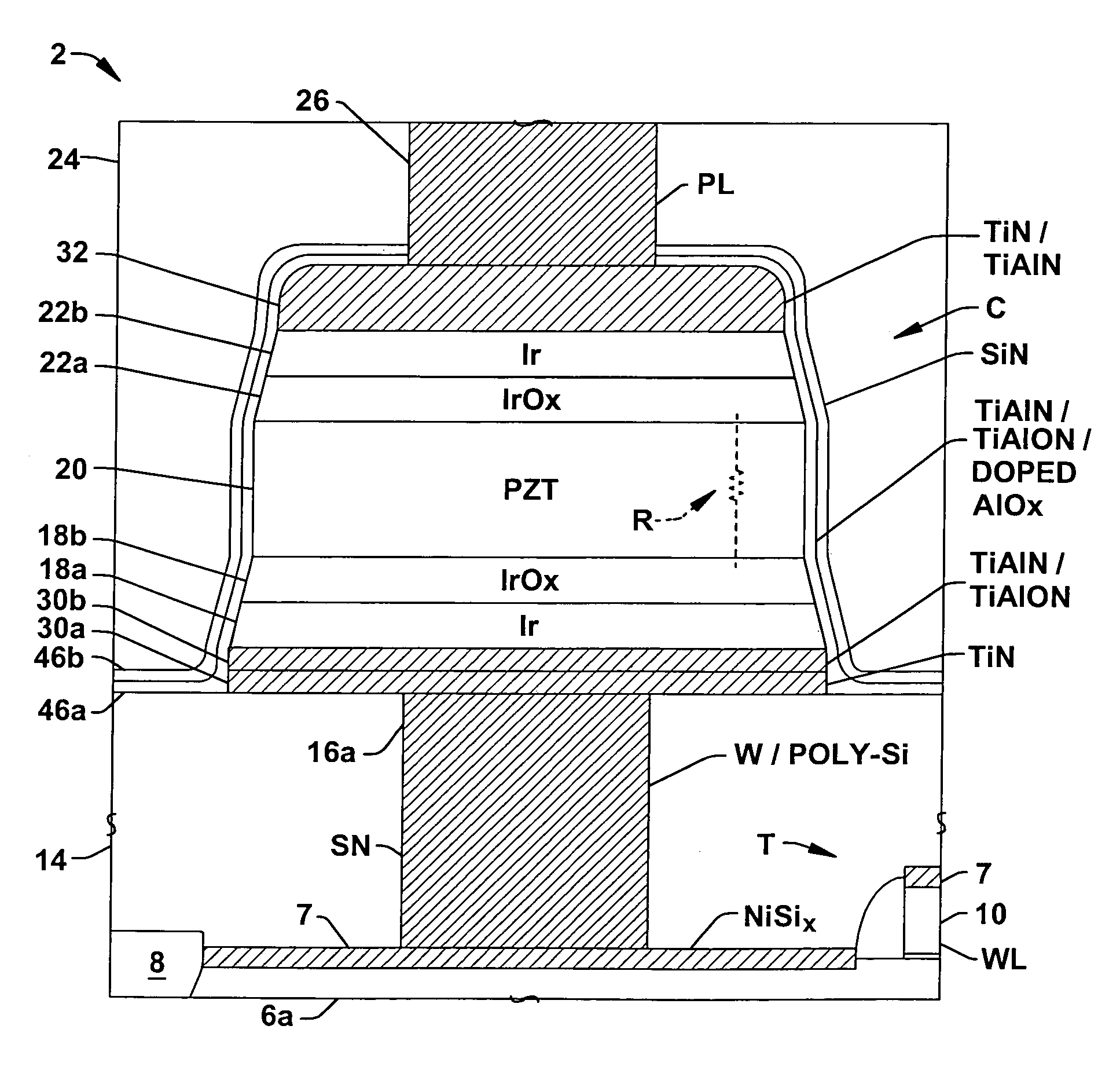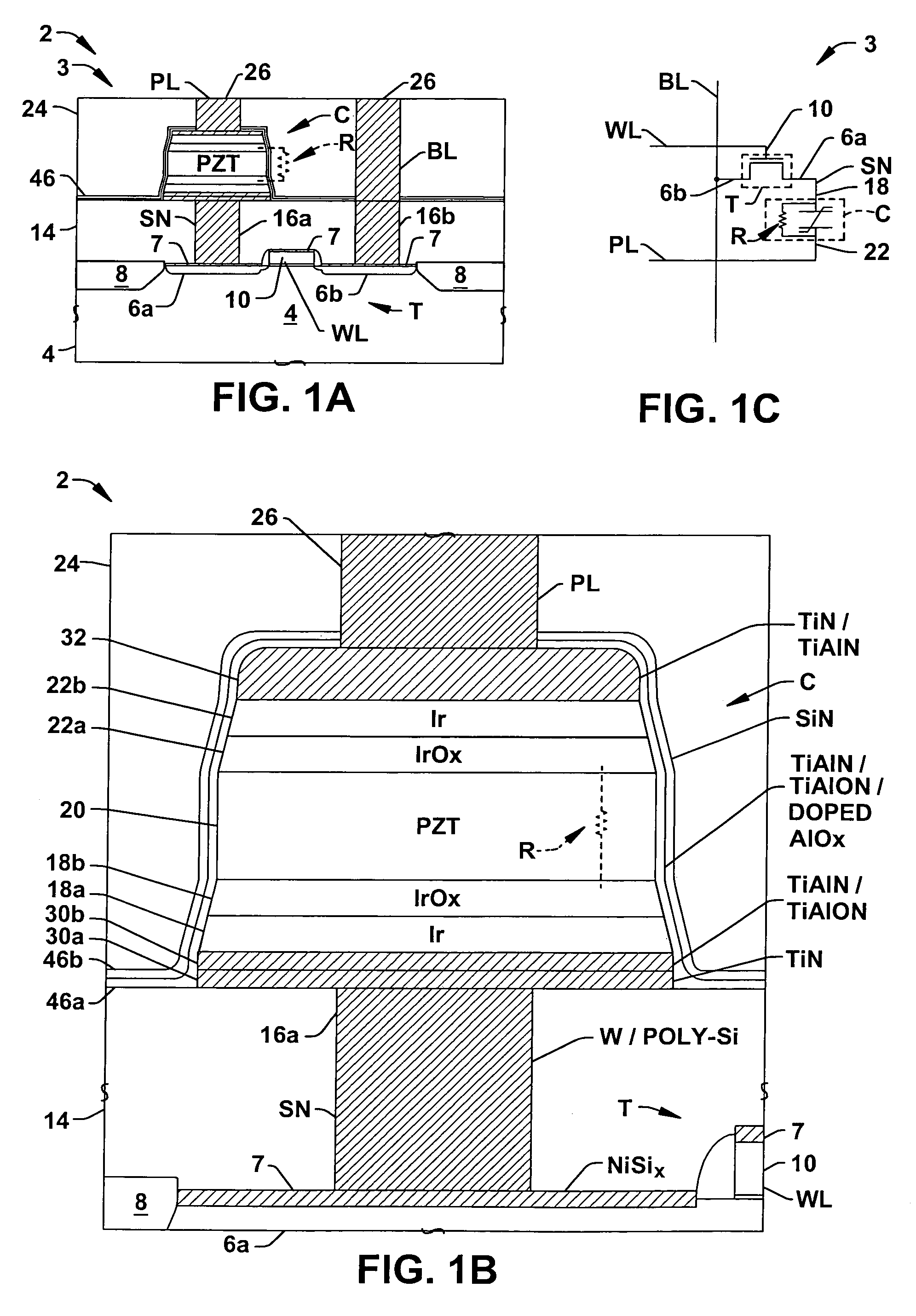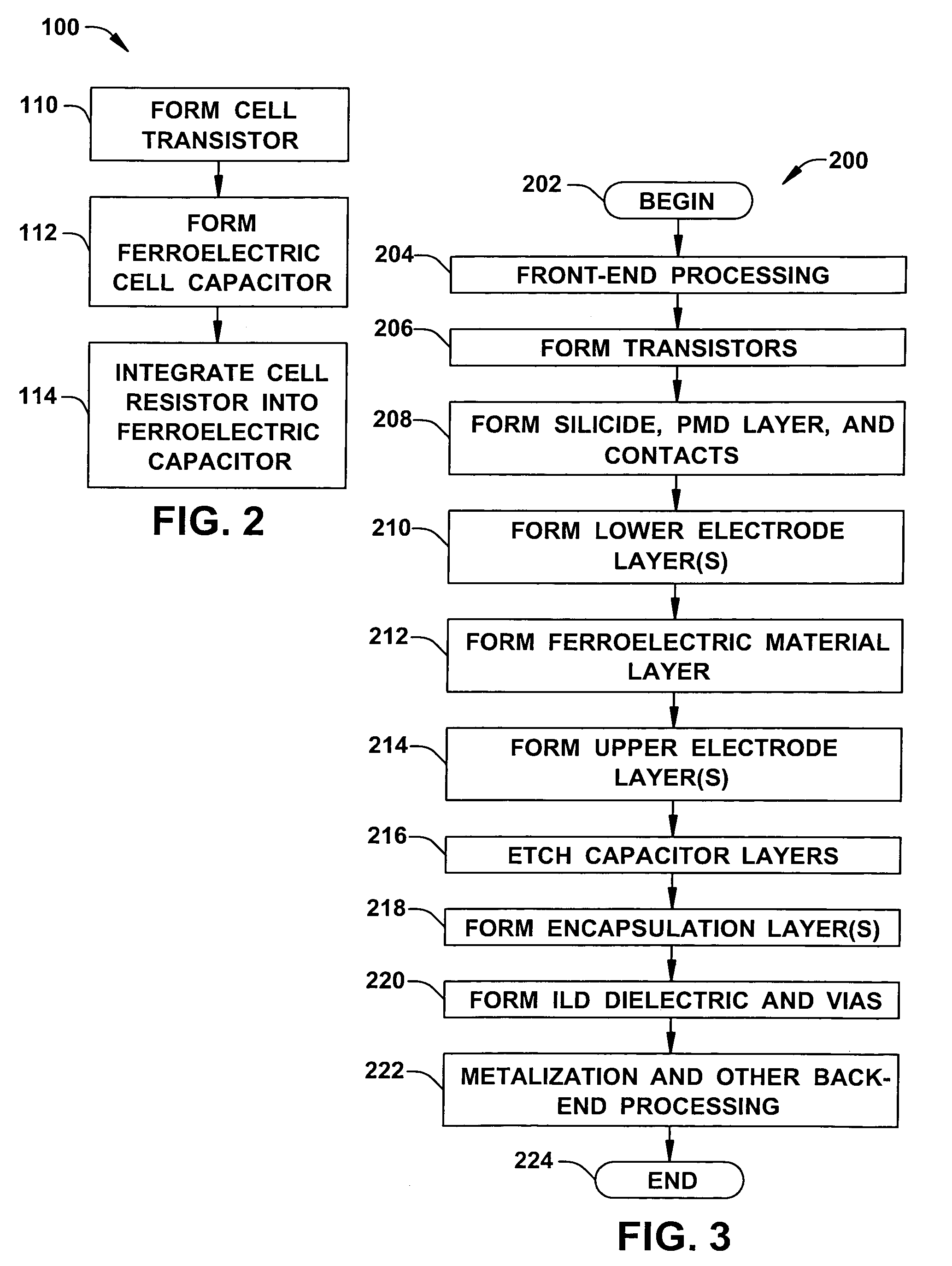Ferroelectric capacitor with parallel resistance for ferroelectric memory
a ferroelectric memory and capacitor technology, applied in capacitors, semiconductor devices, semiconductor/solid-state device details, etc., can solve the problems of unfavorable memory access operations, and incorrect data to be read out of the cell, so as to reduce the charge or discharging of the storage node, inhibit the accumulation or charge loss, and significantly disrupt memory access operations.
- Summary
- Abstract
- Description
- Claims
- Application Information
AI Technical Summary
Benefits of technology
Problems solved by technology
Method used
Image
Examples
Embodiment Construction
[0026]The present invention will now be described with reference to the attached drawing figures, wherein like reference numerals are used to refer to like elements throughout. The invention relates to the provision of a memory cell with a parallel resistance integrated into a ferroelectric cell capacitor stack structure, by which the adverse effects (e.g., disturb voltage) of leaky memory cell access transistors may be mitigated in semiconductor devices employing ferroelectric memory. The invention may be carried out in any type of semiconductor device, for example, devices having memory cells with ferroelectric cell capacitors or other devices, such as integrated circuits in which ferroelectric capacitors are used. The various aspects and advantages of the invention are hereinafter illustrated and described in conjunction with the drawings, wherein the illustrated structures are not necessarily drawn to scale.
[0027]FIGS. 1A–1C illustrate an exemplary ferroelectric memory cell 3 (e...
PUM
 Login to View More
Login to View More Abstract
Description
Claims
Application Information
 Login to View More
Login to View More - R&D
- Intellectual Property
- Life Sciences
- Materials
- Tech Scout
- Unparalleled Data Quality
- Higher Quality Content
- 60% Fewer Hallucinations
Browse by: Latest US Patents, China's latest patents, Technical Efficacy Thesaurus, Application Domain, Technology Topic, Popular Technical Reports.
© 2025 PatSnap. All rights reserved.Legal|Privacy policy|Modern Slavery Act Transparency Statement|Sitemap|About US| Contact US: help@patsnap.com



